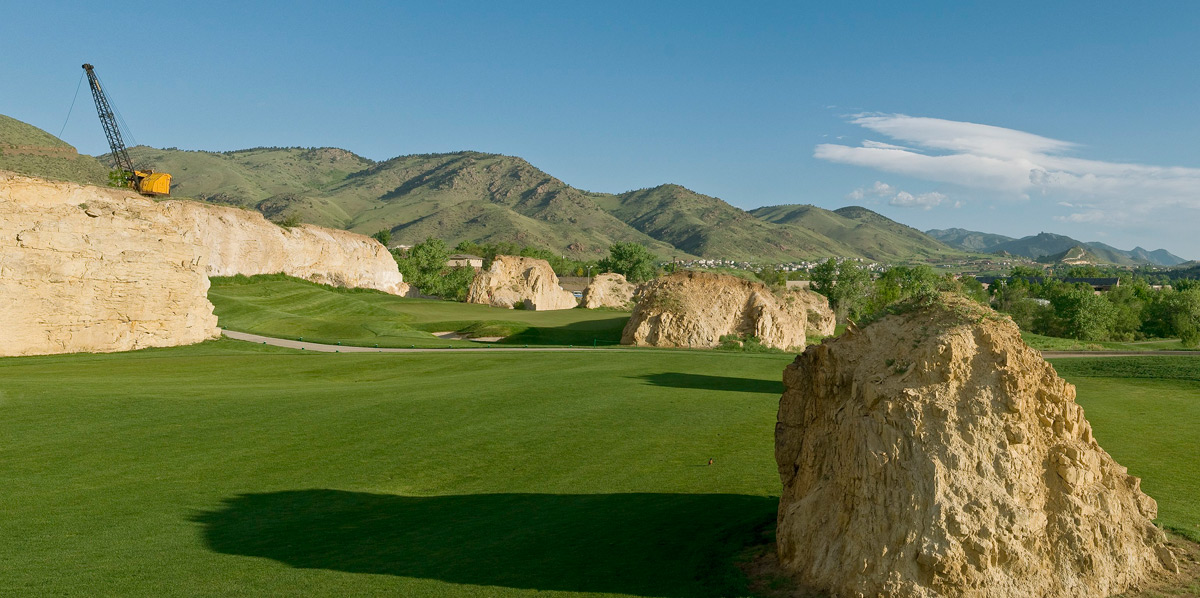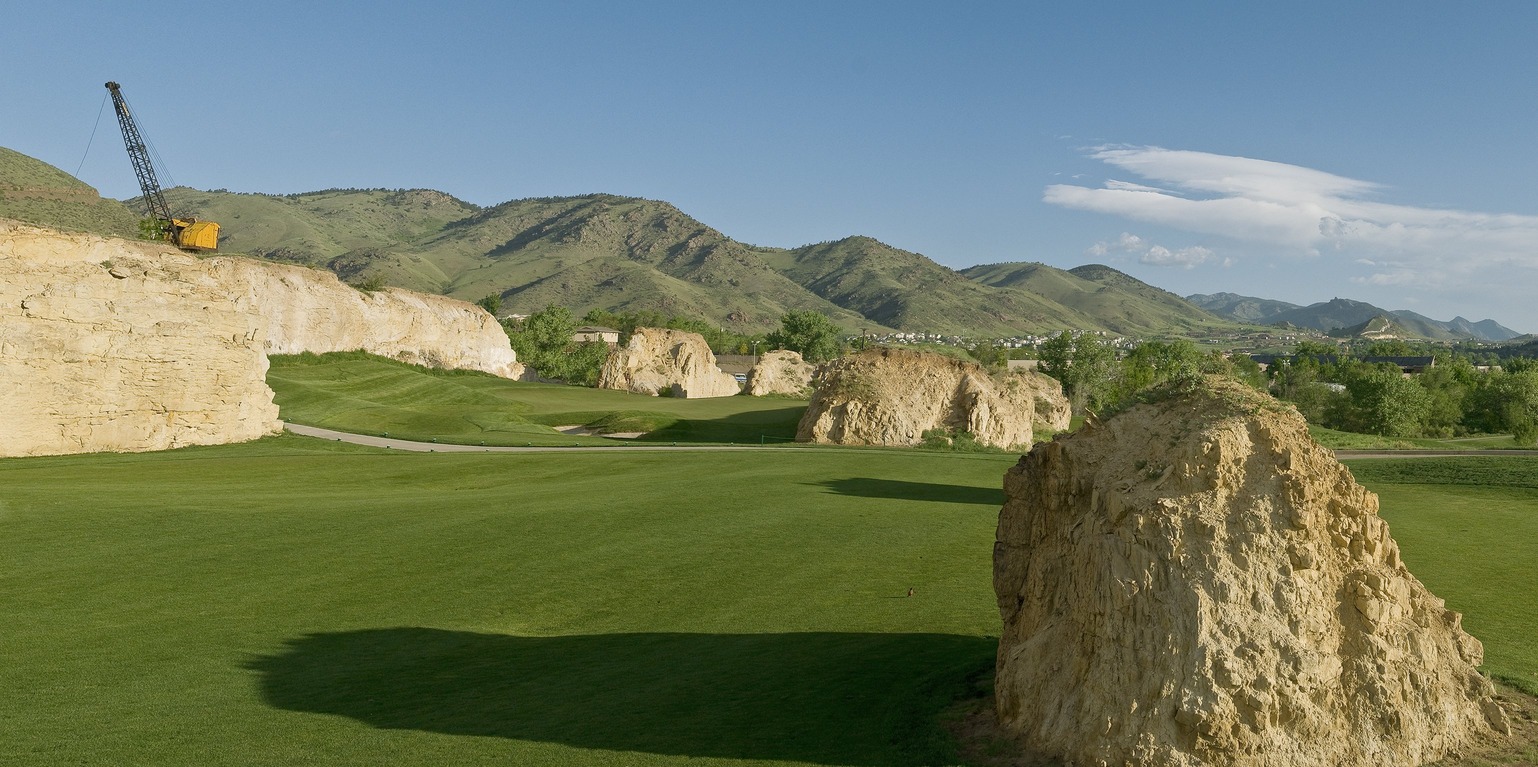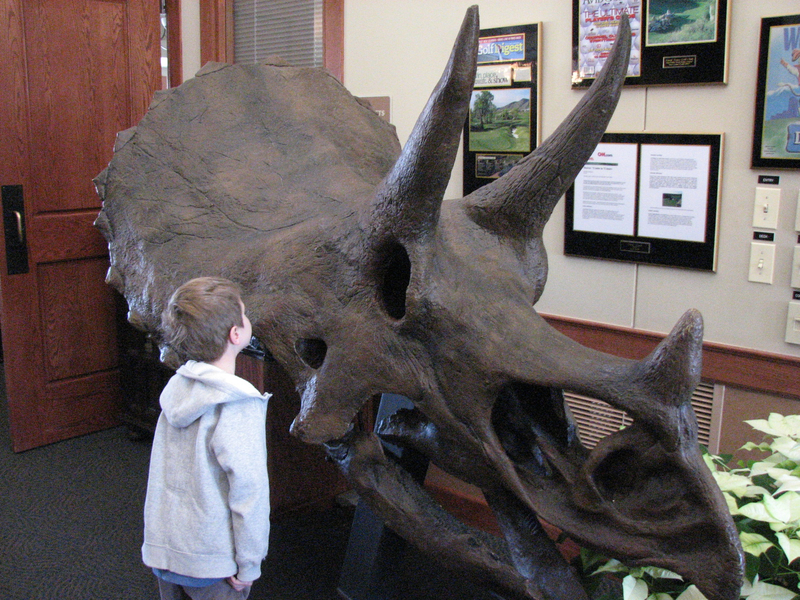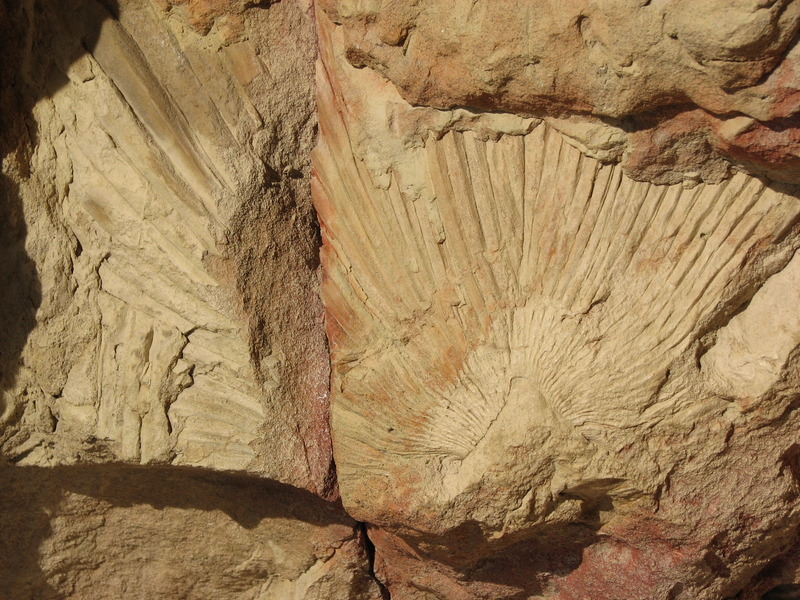The Local newsletter is your free, daily guide to life in Colorado. For locals, by locals.
Golden’s Fossil Trace Golf Club offers players much more than 18 fairways. The Jim Engh-designed course, which repeatedly ranks as one of the Front Range’s and the state’s top public courses, also offers visitors a peek at the area’s historic—and even prehistoric—past.
The course is sculpted out of an old clay quarry, part of a clay-mining enterprise started in 1877 by a Welsh-born miner named George Parfet. The clay from these pits was used to make the bricks that comprise many historic local buildings, including the governor’s mansion and Denver’s East and South high schools. The clay-mining operation passed from generation to generation until 2002, when Chip Parfet, George’s great-great-grandson, sold some excavated pits to the city of Golden to create Fossil Trace Golf Course.

Poignant reminders of this bygone era remain scattered amongst the greens, including an army surplus half-ton shovel, a three-quarter-ton dragline bucket, and a large shovel boom. Several historic structures, including root cellars and a trash incinerator used by a neighboring boys’ school in the mid-1900s, are also visible as you play.
The most ancient—and intriguing—part of Fossil Trace’s history, however, isn’t visible until you reach the back nine—particularly the course’s signature 12th hole, which Golf Digest designated as one of the 18 “most fun holes” in America. This challenging 585-yard, par-5 hole features a pair of deep bunkers, several sandstone pillars resting in the fairway, and along the left side, a long sandstone wall with some really cool fossils, including impressions of palm fronds and triceratops tracks, embedded right in it.
Both the sandstone and clay were deposited about 68 million years ago. At that time, the Front Range resembled the bayous of Louisiana, with sluggish, winding rivers dropping loads of mud and sand on a flat, swampy plain. Many creatures wandering across these dank swamps left prints behind in the still-moist sand, including the three-horned, plant-eating triceratops and duck-billed hadrosaurs, whose tracks are visible at the end of a short, spiraling path that leaves the main trail just before the sandstone wall. These were among the last dinosaurs to roam the planet; they lived just a few million years before a colossal asteroid impact wiped out nearly 70 percent of Earth’s species 65.5 million years ago.
Even if you don’t play golf, the Fossil Trace clubhouse, which is free and open to the public, has some interesting fossil displays (and the year-round restaurant, Three Tomatoes Grille). The exhibits include a cast of a Triceratops skull discovered nearby as well as some early mammal tracks.
Visit: Fossil Trace Golf Club is located at 3050 Illinois St. in Golden. The course is open for daily fee play; tee times may be booked up to 60 days in advance online or up to seven days in advance by calling (303) 277-8750.











